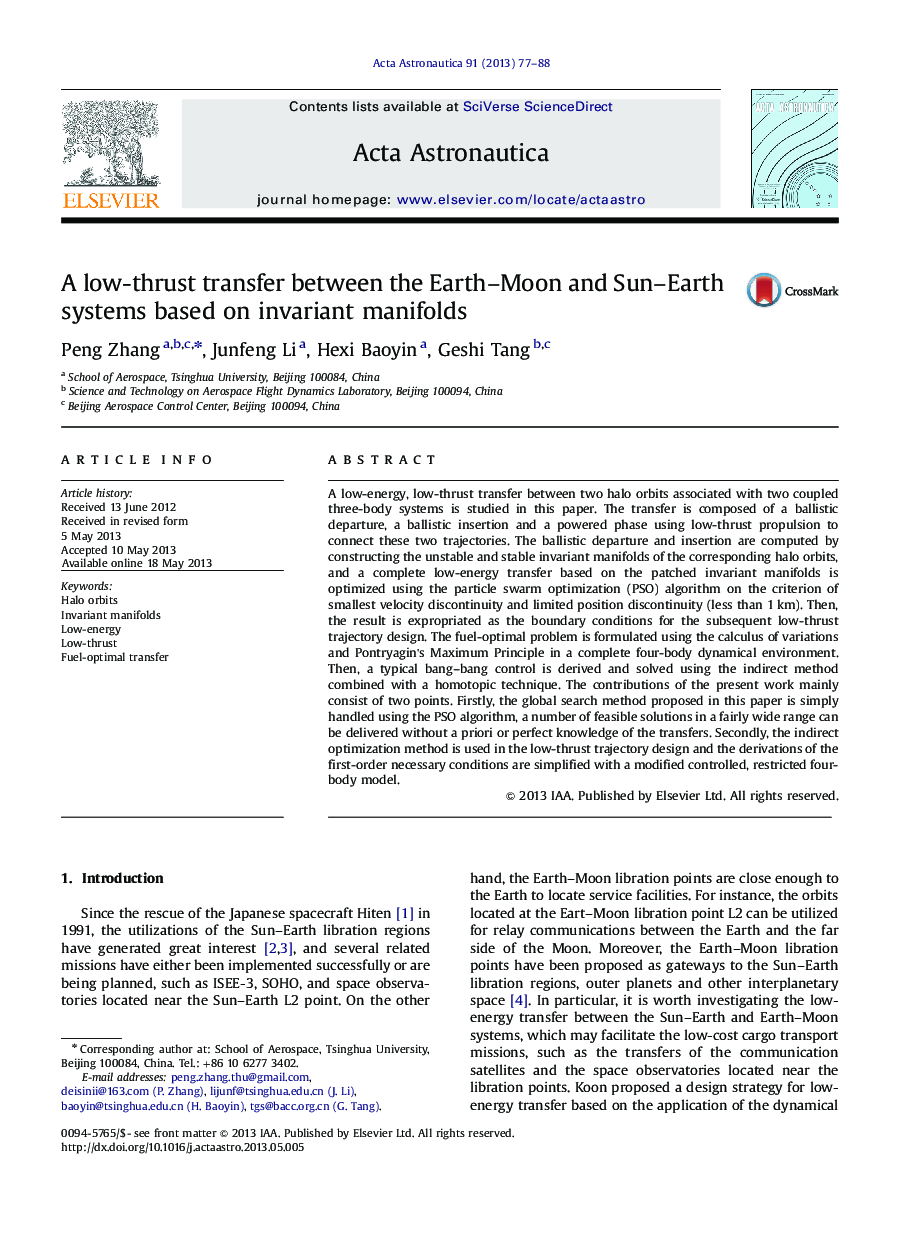| Article ID | Journal | Published Year | Pages | File Type |
|---|---|---|---|---|
| 1714707 | Acta Astronautica | 2013 | 12 Pages |
•A systematic method to design a low-energy, low-thrust transfer is outlined.•The benefits of invariant manifolds and low-thrust trajectories are combined.•The smallest velocity discontinuity of two manifolds is sought skillfully.•The indirect method combined with a homotopic technique is applied.•Compared with chemical propulsion, nearly 70% of propellant mass is saved.
A low-energy, low-thrust transfer between two halo orbits associated with two coupled three-body systems is studied in this paper. The transfer is composed of a ballistic departure, a ballistic insertion and a powered phase using low-thrust propulsion to connect these two trajectories. The ballistic departure and insertion are computed by constructing the unstable and stable invariant manifolds of the corresponding halo orbits, and a complete low-energy transfer based on the patched invariant manifolds is optimized using the particle swarm optimization (PSO) algorithm on the criterion of smallest velocity discontinuity and limited position discontinuity (less than 1 km). Then, the result is expropriated as the boundary conditions for the subsequent low-thrust trajectory design. The fuel-optimal problem is formulated using the calculus of variations and Pontryagin's Maximum Principle in a complete four-body dynamical environment. Then, a typical bang–bang control is derived and solved using the indirect method combined with a homotopic technique. The contributions of the present work mainly consist of two points. Firstly, the global search method proposed in this paper is simply handled using the PSO algorithm, a number of feasible solutions in a fairly wide range can be delivered without a priori or perfect knowledge of the transfers. Secondly, the indirect optimization method is used in the low-thrust trajectory design and the derivations of the first-order necessary conditions are simplified with a modified controlled, restricted four-body model.
